Traduzione generata automaticamente
Mostra originale
Mostra traduzione
Image dimensions: 10.5x8.5 cm Original Ex Libris includes passpartout. Hand signed and signed on plate. Very good conditions. Michel Fingesten Michel Finkelstein, known as Fingesten, was born in 1884 in Buzkovice u Ostravy; he was a painter and engraver, who was famous particularly for his extraordinary production of Ex Libris (bookplates). After studying at the Academy of Fine Arts in Vienna, and in Monaco with Franz von Stuck, who addressed him to the caricature and to the graphics of small size, Fingesten left Austria; he travelled all over the world, visiting Europe, the United States of America and the Oriental countries. Fingesten’s stay in Berlin since 1913 was decisive for his contact with the world of the engraving. After his adhesion to the New Secession, Fingesten destroyed his previous pictorial production and he decided to dedicate himself to the dimension of the engraving; even if he preferred the graphics, he continued to see himself as a “painter”. The German city was characterized by a very dynamic artistic atmosphere that stimulated Fingesten. The engravings of this artist were published since 1915 in files and books in limited edition. Fingesten’s works were published also in the famous periodicals of the expressionist avant-garde, like “Genius” and “Marsyas”, with the artists and the writers most important of his age. Considered as a genius of the Ex Libris, that became with him a big art of small size, Fingesten realised more over than 1.500 of these brands of property since 1915. Fingesten’s Ex Libris were nourishment for the bibliophiles, who glued the bookplates on the first page of theirs books to indicate the property and who traded these Ex Libris. The Ex Libris is a genre that doesn’t have confines and that can’t be reduced to indicate the name of the owner on the book, on which it is glued. It left his old function of simple heraldic sign of property, and it became almost the projection of the bibliophile’s personality. Even if he didn’t fall in the eclecticism, Michel Fingesten used generously the medium of the quote, in the subject, in the form and in the style. In the 20s, for example, his art oscillates between Otto Dix and George Grosz, of which he overcomes the social critique and the erotism, and Karl Arnold of which he beats the irony. The Great Depression of 1929 and the rapid advance of the Nazism contributed in a significant way to the progressive isolation of the Czech painter and engraver. In the spring of the 1935, Fingesten left Germany and went to Italy, where he settled in Trieste and Milan. The collector Mantero remembers about Fingesten’s Italian stay that “he lived in a home without furnitures” in Via Chiaravalle 11. Mantero, who was one of the most important Fingesten’s customers of Ex Libris, wrote: “I understood he had a difficult and poor life for absence of money, but he didn’t have ambition of a rich life, indeed he told me that the earnings to buy some bread and a glass of wine were enough for him”. In that period, the main means of subsistence were the commissions of the collectors of Ex Libris, especially the collectors of Milan and Como, members of the circle of friends of the art merchant Luigi Filippo Bolaffio. Also known as “Picasso of the Ex Libris”, Fingesten explored this artistic medium and he elevated it with new and powerful expressive resources. When the Ex Libris was detached from its practical function, the Artist began to create Ex Libris also for fake customers, for “famous contemporary people”, poets, musicians, and since 1928, for political men. The Ex Libris, realised with a lot of graphic techniques, like the etching, the drypoint and the lithography, has always (with the graphics of occasion) the signature of the Artist, that underlines the awareness of his valour. An important chapter of the production of this Artist was dedicated to the erotic Ex Libris, that for their irony were understood with difficulty by people that didn’t belong to the circle of the Artist. Some of the most secret and rare erotic works by Fingesten are linked to the commissions of Gianni Mantero. The dominant element of these engravings is the sarcasm, that is sometimes connected to a gloomy irony, and to the presence of the death, that coincided with the war, particularly in the last years of the Artist existence. In his compositions, Fingesten was a narrator of life and death, of sex and love, of nightmares, hopes, art and poetry. His narration wasn’t without the time and the space, but it was at the center of the contemporary dimension, in the 20s and 30s of the anguished Europe that was going to the ruin. We can underline that the relationship between the Artist and the customer had an important role in the definition of the power of these graphic works; actually the creative energy, that was born from the contact between the Artist inspiration and the customer personality, generates a strong expressive freedom. After his death, Michel Fingesten and his works were forgotten; today there is a new attention to this very important artist and to his visionary sign. Bibliography • N. Nechwatal, Michel Fingesten – Das graphische Werk, Coburg 1984 • A. Tomasetig, Michel Fingesten: dalla collezione Cauti una mostra di ex libris e grafica d’occasione, 2005 • A. Parik, The unknown Michel Fingesten, Praha 2008 This artwork is shipped from Italy. Under existing legislation, any artwork in Italy created over 70 years ago by an artist who has died requires a licence for export regardless of the work’s market price. The shipping may require additional handling days to require the licence according to the final destination of the artwork.
Dimensioni dell'immagine: 10.5x8,5 cm Originale Ex Libris include il passpartout. Firmato a mano e firmato su lastra. Ottime condizioni. Michel Fingesten Michel Finkelstein, detto Fingesten, è nato nel 1884 a Buzkovice u Ostravy; era un pittore e incisore, famoso soprattutto per la sua straordinaria produzione di Ex Libris (lastre per libri). Dopo aver studiato all'Accademia di Belle Arti di Vienna e a Monaco con Franz von Stuck, che lo indirizzò verso la caricatura e la grafica di piccole dimensioni, Fingesten lasciò l'Austria; viaggiò in tutto il mondo, visitando l'Europa, gli Stati Uniti d'America e i paesi orientali. Il soggiorno di Fingesten a Berlino dal 1913 fu decisivo per il suo contatto con il mondo dell'incisione. Dopo l'adesione alla Nuova Secessione, Fingesten distrusse la sua precedente produzione pittorica e decise di dedicarsi alla dimensione dell'incisione; anche se preferì la grafica, continuò a vedersi come "pittore". La città tedesca era caratterizzata da un'atmosfera artistica molto dinamica che stimolava Fingesten. Le incisioni di questo artista furono pubblicate dal 1915 in fascicoli e libri in edizione limitata. Le opere di Fingesten furono pubblicate anche sui famosi periodici dell'avanguardia espressionista, come "Genius" e "Marsyas", con gli artisti e gli scrittori più importanti della sua epoca. Considerato un genio dell'Ex Libris, che divenne con lui una grande arte di piccole dimensioni, Fingesten realizzò più di 1.500 di questi marchi di proprietà a partire dal 1915. Gli Ex Libris di Fingesten erano il nutrimento per i bibliofili, che incollavano le targhette sulla prima pagina dei loro libri per indicare la proprietà e che commerciavano questi Ex Libris. Gli Ex Libris sono un genere che non ha confini e che non può essere ridotto per indicare il nome del proprietario sul libro, sul quale è incollato. Ha lasciato la sua vecchia funzione di semplice segno araldico della proprietà, ed è diventato quasi la proiezione della personalità del bibliofilo. Anche se non è caduto nell'eclettismo, Michel Fingesten ha usato generosamente il mezzo della citazione, nel soggetto, nella forma e nello stile. Negli anni Venti, ad esempio, la sua arte oscilla tra Otto Dix e George Grosz, di cui supera la critica sociale e l'erotismo, e Karl Arnold di cui batte l'ironia. La Grande Depressione del 1929 e la rapida avanzata del nazismo contribuiscono in modo significativo al progressivo isolamento del pittore e incisore ceco. Nella primavera del 1935, Fingesten lascia la Germania e si reca in Italia, dove si stabilisce a Trieste e a Milano. Il collezionista Mantero ricorda del soggiorno italiano di Fingesten che "viveva in una casa senza mobili" in via Chiaravalle 11. Mantero, che fu uno dei più importanti clienti di Fingesten dell'Ex Libris, scrisse: "Capii che aveva una vita difficile e povera per mancanza di denaro, ma non aveva l'ambizione di una vita ricca, anzi mi disse che gli bastavano i guadagni per comprare del pane e un bicchiere di vino". In quel periodo, i principali mezzi di sussistenza erano le commissioni dei collezionisti dell'Ex Libris, in particolare dei collezionisti di Milano e di Como, membri della cerchia di amici del mercante d'arte Luigi Filippo Bolaffio. Conosciuto anche come "Picasso degli Ex Libris", Fingesten esplorò questo mezzo artistico e lo elevò con nuove e potenti risorse espressive. Quando l'Ex Libris si staccò dalla sua funzione pratica, l'Artista iniziò a creare Ex Libris anche per falsi clienti, per "personaggi famosi contemporanei", poeti, musicisti e, dal 1928, per uomini politici. L'Ex Libris, realizzato con molte tecniche grafiche, come l'acquaforte, la puntasecca e la litografia, ha sempre (con la grafica dell'occasione) la firma dell'Artista, che sottolinea la consapevolezza del suo valore. Un capitolo importante della produzione di questo Artista è stato dedicato agli Ex Libris erotici, che per la loro ironia sono stati compresi con difficoltà da persone che non appartenevano alla cerchia dell'Artista. Alcune delle opere erotiche più segrete e rare del Fingesten sono legate alle commissioni di Gianni Mantero. L'elemento dominante di queste incisioni è il sarcasmo, a volte legato a una cupa ironia, e alla presenza della morte, che coincideva con la guerra, soprattutto negli ultimi anni di vita dell'Artista. Nelle sue composizioni, Fingesten è stato un narratore della vita e della morte, del sesso e dell'amore, degli incubi, delle speranze, dell'arte e della poesia. La sua narrazione non era priva del tempo e dello spazio, ma era al centro della dimensione contemporanea, negli anni Venti e Trenta dell'Europa angosciata che andava in rovina. Possiamo sottolineare che il rapporto tra l'Artista e il cliente ha avuto un ruolo importante nella definizione della potenza di queste opere grafiche; in realtà l'energia creativa, che nasce dal contatto tra l'ispirazione dell'Artista e la personalità del cliente, genera una forte libertà espressiva. Dopo la sua morte, Michel Fingesten e le sue opere sono stati dimenticati; oggi c'è una nuova attenzione per questo importantissimo artista e per il suo segno visionario. Bibliografia - N. Nechwatal, Michel Fingesten - Das graphische Werk, Coburg 1984 - A. Tomasetig, Michel Fingesten: dalla collezione Cauti una mostra di ex libris e grafica d'occasione, 2005 - A. Parik, L'ignoto Michel Fingesten, Praha 2008 Quest'opera viene spedita dall'Italia. Secondo la legislazione vigente, qualsiasi opera d'arte creata in Italia oltre 70 anni fa da un artista morto richiede una licenza per l'esportazione indipendentemente dal prezzo di mercato dell'opera. La spedizione può richiedere giorni di gestione aggiuntivi per richiedere la licenza in base alla destinazione finale dell'opera d'arte.
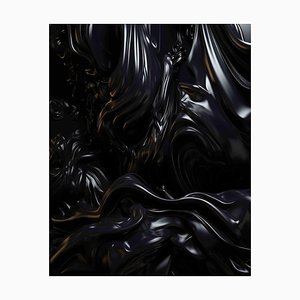
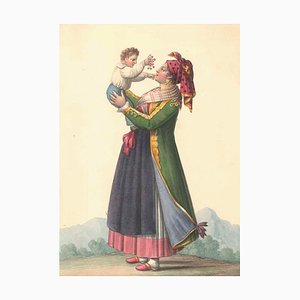
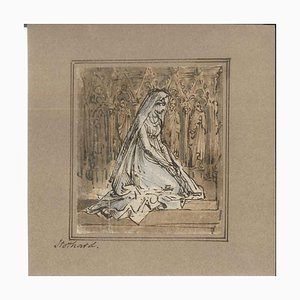

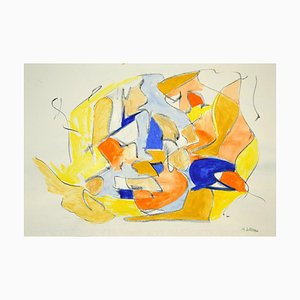
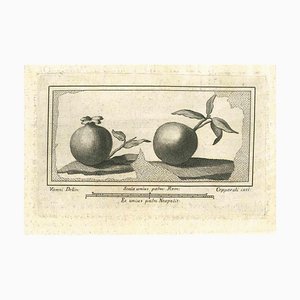
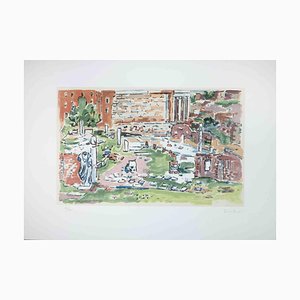
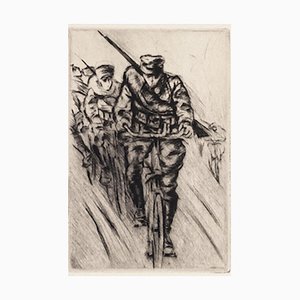
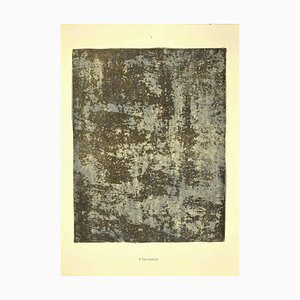


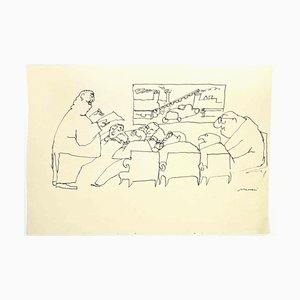
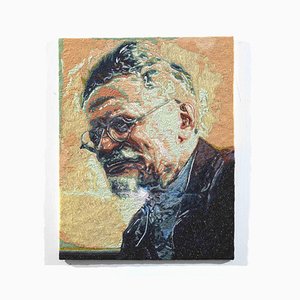
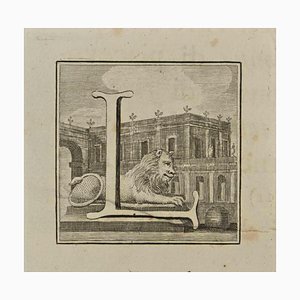
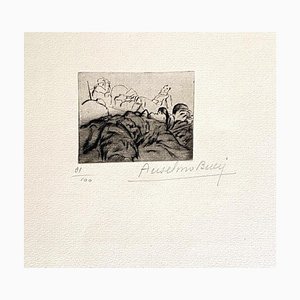
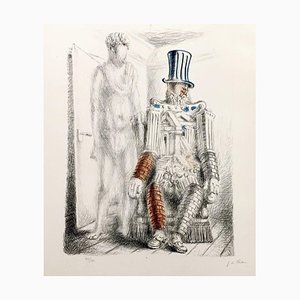
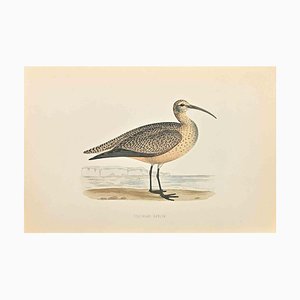
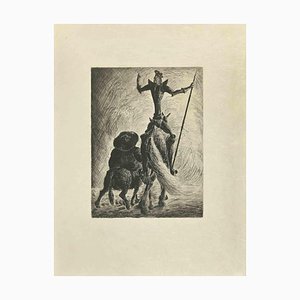
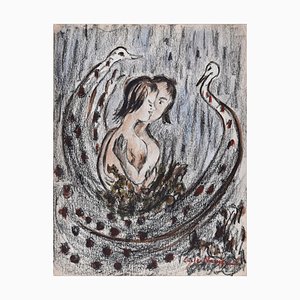
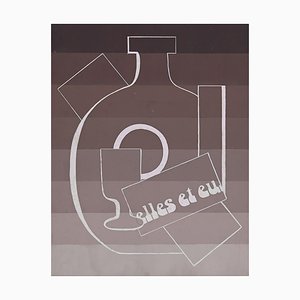
Contattaci
Fai un'offerta
Abbiamo notato che sei nuovo su Pamono!
Accetta i Termini e condizioni e l'Informativa sulla privacy
Contattaci
Fai un'offerta
Ci siamo quasi!
Per seguire la conversazione sulla piattaforma, si prega di completare la registrazione. Per procedere con la tua offerta sulla piattaforma, ti preghiamo di completare la registrazione.Successo
Grazie per la vostra richiesta, qualcuno del nostro team vi contatterà a breve.
Se sei un professionista del design, fai domanda qui per i vantaggi del Programma Commerciale di Pamono